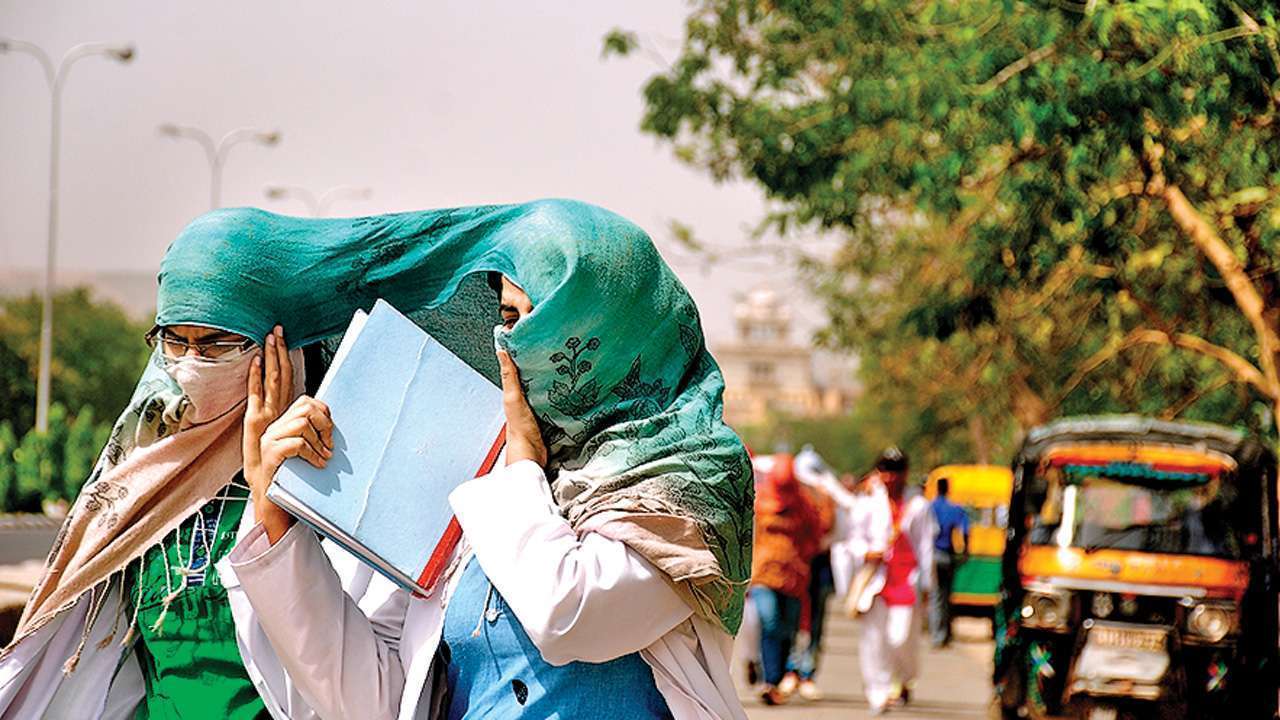Heatwave in India in April 2025 intensified by climate change: Report
The meteorological conditions leading to the heatwave were up to 4°C warmer than the second half of the 20th century.
By Editorial Desk / Apr 25, 2025

Image Courtesy: India Today
Climate change played a significant role in strengthening the heatwave that swept parts of India and Pakistan during mid-April, according to a new analysis by ClimaMeter, a consortium of organisations and experts who analyse extreme weather events and the role of climate change.
As the summer progresses, India is also likely to witness more spells of heatwave. Temperatures have been settling in the range of 40°C-45°C across several parts of the northwestern plains and Central India. The India Meteorological Department (IMD) has also issued heatwave warnings across these areas till the beginning of May.
The report stated that the April 2025 heatwave event was strongly associated with the ‘very exceptional’ meteorological conditions. These meteorological conditions leading to the heatwave were up to 4°C warmer than the second half of the 20th century.
Scientists also noted that natural climate variability, notably the El Niño—Southern Oscillation, played a minor role as it was presently in neutral phase. Thus, the observed changes in the heatwave spells are likely due to human-driven climate change, with only a minor contribution from natural variability.
“The spring heatwave gripping India and Pakistan underscores an alarming intensification of climate extremes, profoundly affecting millions throughout the region. Indeed, the tropical Indo-Pacific region is witnessing a shift in weather patterns that are increasing the frequency of heatwaves. Rising cases of heat-related illnesses, widespread disruptions to agricultural productivity, and critical water shortages are among the direct consequences of these extreme events,” said Dr Gianmarco Mengaldo, Assistant Professor, National University of Singapore.
Methodology
The team used reanalysed Copernicus data (ERA5) to see how events similar to the meteorological conditions leading to the April 2025 India and Pakistan heatwave have changed in the present (1987–2023) compared to what they would have looked like if they had occurred in the past (1950–1986) in the region [55°E 80°E 20°N 40°N].
Similar past events suggest that the meteorological patterns associated with the heatwave occur with a similar frequency now as they did in the past. Changes in urban areas reveal that New Delhi, Jaipur, and Islamabad are experiencing warmer conditions, with Islamabad being the most affected, seeing temperatures up to +3°C higher than in the past.
“Spring and summer heatwaves are pushing to the limits the living conditions of over 1 billion people in the Indo-Gangetic valley, with disproportionate impacts on vulnerable sectors of the population and especially on people working in agriculture, in the construction sector, , women, and children. The temporal persistence and spatial extent of these events, which are exacerbated by climate change, are responsible for dangerous systemic risk in the region and beyond. Addressing risks relevant for South Asia like those associated with these heatwaves, with the uncertain fate of the summer Monsoon, and with the dramatic worsening of winter pollution is a major priority deserving Moonshot resources,” said Valerio Lucarini, Professor, University of Leicester, UK.
The report further cited that the occurrence of large positive anomalies of temperature and extremely dry conditions in the pre monsoonal season is becoming commonplace in South Asia, as shown by the persistent and spatially extended events in 2015, 2019, 2022 and 2024, which have led to thousands of deaths and disruption to ecosystems and society, with temperature records being shattered every few years.
Climate change has been significantly contributing to the increase in heatwaves in India through various mechanisms. Warming resulting from climate change has led to an increased frequency, intensity, and duration of heat-related events, including heatwaves, in most land regions. According to IPCC’s Report on the Ocean and Cryosphere in a Changing Climate, climate change is projected to alter land conditions, affecting temperature and rainfall in regions, which can enhance winter warming due to decreased snow cover and albedo in boreal regions, while reducing warming during the growing season in tropical areas with increased rainfall.
With surface air temperature increasing since the 20th century in the Asia, the threat of heatwaves across the region will also intensify. South Asia is specifically at risk as the frequency and duration of heatwaves have increased which is directly linked to warming of the Indian Ocean basin and frequent El Ninos, leading to severe impacts on agriculture and human discomfort.
Climate Change Heatwave in India Weather in India Climate change and heatwave

